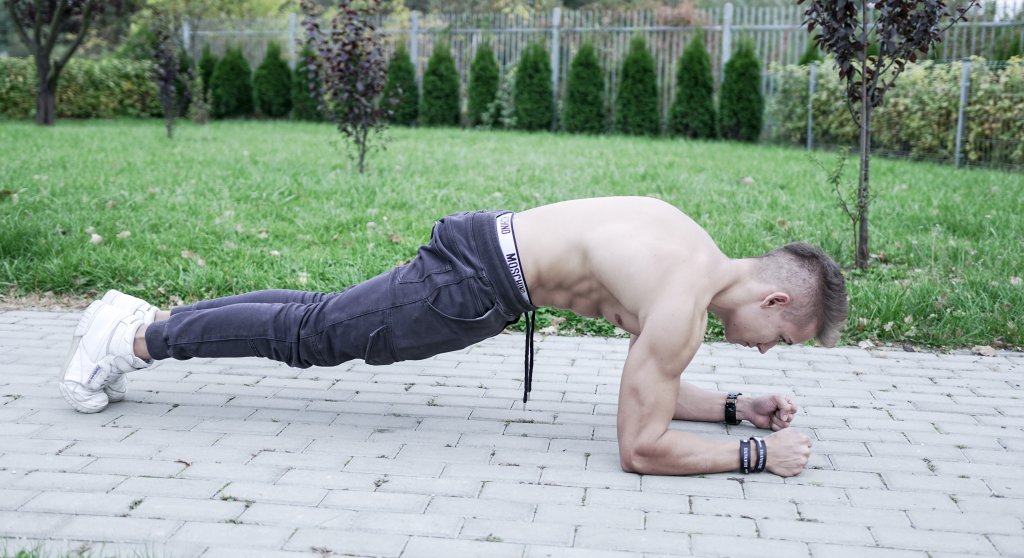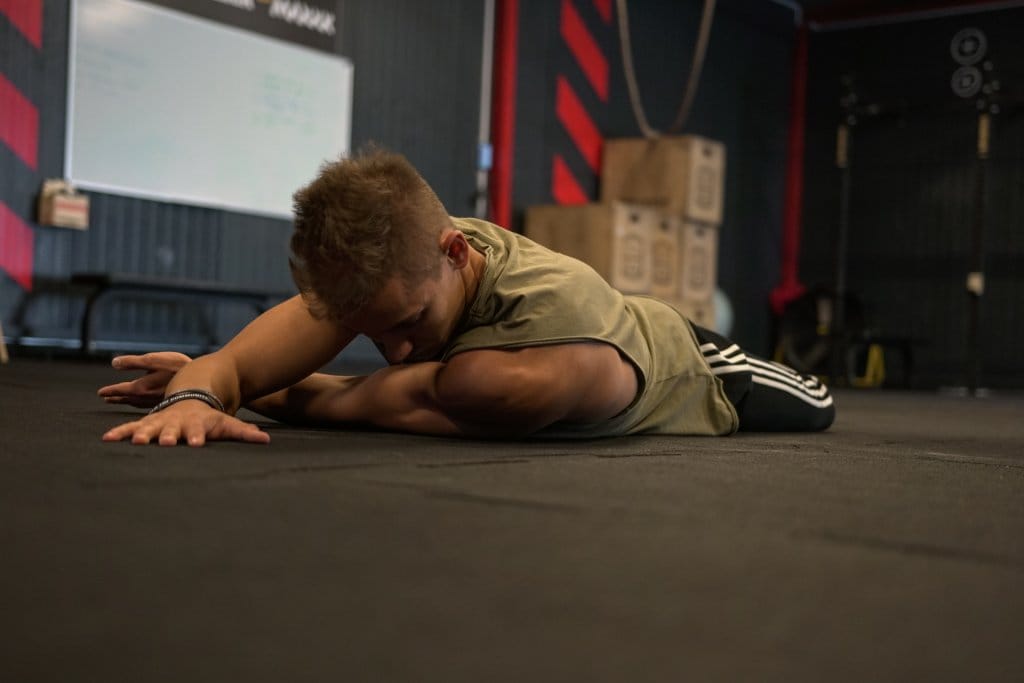
Shoulder pain – get rid of it!
Shoulder Pain – Causes And Best Exercises to Get Rid of It
Many of us have been there – you are focused on your workouts, you are persistent, and stick to your training program, but then out of nowhere you start feeling pain in one of your shoulders.
However, there is no reason to panic as statistics clearly show that 70 percent of people have experienced shoulder pain at some point in their lives. Taking into consideration the fact how frequently we use our shoulders every day, it’s not surprising data.
If you train regularly or even if you just started your workouts, for sure you are aware that strong and flexible shoulders are a must to perform correctly almost every exercise – pushing, pulling, lifting, holding, or carrying – all of them require shoulder movements.
No wonder then that injuries of our shoulders and shoulder blades happen quite frequently. The good news, however, is that most of them don’t exclude you from training. You just need to detect the culprit of your pain and find out how to exercise to make a quick recovery so that you can move back to your workout routine.
The Causes of Shoulder Pain
As the construction of your shoulder girdle is very complex, there are various possible causes of your left or right shoulder pain, which in some cases may radiate to your neck too.
Pain, however, is also a complex concept as two people with very similar health problems may feel the pain in a completely different way. What’s more, the third person with a similar diagnosis may not feel the pain at all. Therefore, you shouldn’t panic if your shoulder pain or neck pain is strong, but you also shouldn’t ignore it if the pain seems to be really mild.
Our shoulder may be described as a shallow socket, which lets us perform a wide range of movements. There are plenty of shoulder muscles with four rotator cuff muscles being the most important ones. They connect so called scapula (your shoulder blade) to the humerus (your upper arm) and give support for the glenohumeral joint, which is commonly known as a shoulder joint.
What’s more, our shoulder construction includes plenty of other small joints and each of them plays an important part in the movement formation. Due to the complexity of our shoulder the causes of shoulder pain are often not easy to identify, however, they may be divided into two main categories.
If the pain in your left or right shoulder is sharp and you feel it mainly while moving, the impingement syndrome might be the cause of pain. Irritation of some nerve, poor flexibility, or weakness of a particular muscle may be the cause of impingement. As a result, your tissues get irritated and you feel pain in your left or right shoulder.
If the pain you feel is maybe not sharp or very severe, but it’s constant, it may suggest that a shoulder tendon got inflamed, which is known as tendonitis. If it doesn’t go away even if you take a two week break, it is a signal that there is a permanent pressure put on your tissue and inflammation cannot subside.
Remember that only a professional can give you a proper diagnosis and if you treat your psychical health seriously, you should always consult the issue with a doctor or a physical therapist. Only then you can safely do the exercises described in the next section.
Best Exercises to Get Rid of Shoulder Pain
If you’ve been training for some time, for sure you have some fixed workout routine. When the pain of your shoulder appears, it doesn’t mean that you need to stop exercising, the key to success is to break the routine and introduce new movements into your workouts.
If it has been clarified that your shoulder injury is not very serious and your doctor hasn’t forbidden you to exercise, you need to have a more conscious approach towards your training routine. Pay attention to your technique, devote more time to the warm up exercises, in which you will properly stretch and activate different muscles of your body.
It’s highly possible that you’ve been making some movement improperly over and over again. Now, it’s time to adapt your exercises in such a way that you will strengthen your weaker points. Perform each of the exercises slowly and consciously observing your body to see if any movement causes pain in your shoulder. Also, see how the exercises affect the rest of your workouts. If you feel more flexible and the pain subsides, that’s the path you should follow.
Remember that you can’t treat your painful shoulder as a separate unit. Your body is one, complex organism and because of that we will show you some simple exercises in which you will work not only on your shoulder, but the core, stability, strength, and motor control of the whole of your body.
Perform each of the exercises slowly, with controlled movements. Listen to your body as it will tell you how much you can allow yourself to do.
1. Shoulder Mobility – L-stretch Exercise
Position yourself on your knees and put your upper body on some elevated structure, for example on a bed with a hard mattress. Extend your arm along your chest and leaning forward put your chest on this arm.
Your other arm should be extended in front of you. Now, with a gentle movement, you should lean in the direction of your arm that is stretched across your chest. It’s difficult to say how much you can lean, you just need to feel it on your own as it depends on your mobility. Lean forward until you can feel a gentle stretch at the back of your shoulder.
Repeat the movement ten times and after the last stretch hold it for about twenty seconds. Follow this procedure with your second shoulder.
2. Overhead Stability Exercise
This exercise will fantastically train the control over your movements in the shoulders area. Put your hands on the floor and your feet on some elevated structure, like a bed or chair. Now you need to try to open up your shoulder blades by pressing your upper body into the floor as much as you can.
Now try to move your shoulders in different directions and angles, but move only your shoulders, the rest of your body should remain still. Do it for about a minute. It’s a fantastic exercise not only for your shoulders, but for a strong core as well.
3. Chest Extension and Shoulder Flexibility Exercise
Position yourself on your knees and stretch your arms in front of you on some elevated structure like a bed or chair. Now perform a movement as if you wanted to press into the bed and lean your chest towards the floor and then move back towards the bed.
The movement should be smooth as then it will fantastically extend the thoracic part of your spine, which tends to be stiff among a lot of people. If the exercise seems easy for you and you don’t feel any stretching, you may do the exercise using one arm at a time.
Repeat the stretch ten times, holding the last one for about twenty seconds.
4. Shoulder Blades Extension Exercise
Lie down on an elevated structure, bed will work well, your face should be directed towards it while your arm should hang off the bed. Now rotate the hanging arm backwards and stretch it. Hold this position for 10 seconds and then move back to a starting position. Repeat it ten times.
Stay in the position and repeat the movement, but now stretch your arm forward. Hold it and rest. Do it ten times as well and then repeat the whole set with your other arm.
5. Shoulders Stability Exercise with Parallettes
Sit down on the floor with parallettes on both of your sides. Support your straight arms on them and try to press down into them. It’s important to keep your elbows straight and your chest up.
Now, only move your shoulders up, hold it for three seconds and move back to the starting position. Remember that they key here is to involve your shoulders into work. Thus, you can perform only five or six reps in a round, but to them right.
Don’t make any chaotic movements. While you move your shoulders up and down, the rest of your body should remain still. You can progress the exercise after a few weeks and apart from the up and down movement, you can start making circles, but in this case also make sure that you activate your shoulders in the exercise.
The parallettes here make the exercise more difficult, engaging your core to work intensely. You can perform the exercise for a minute, rest and then repeat twice. However, if you can’t keep your core still for a minute, you can start with 30 seconds.
6. Mini Band Shoulder External Rotation Exercise
You should always take a mini band at your training session as it’s a fantastic idea for proper warm-up. Exercises with the use of a mini band will activate your muscles practically without any risk of an injury.
Shoulder external rotation with the use of a mini band is a very basic exercise, which will fantastically activate your shoulder blades. As it’s a type of a corrective or warm up exercise, choose a band of medium resistance. When you choose a band of high resistance, it becomes a strengthening exercise.
Stand with your body posture straight and your head directed forward. Place a mini band around your wrists, keep your arms and elbows down to their sides. Now, simply squeeze your shoulder blades towards each other while you move your hands away from each other.
Do the movement ten times. Have a one minute rest and repeat the exercise ten times one more time.
Shoulder Pain – What to Avoid
The exercises described in the previous section are simple, yet effective. They will make your shoulders and core stronger and more flexible. You will also be able to control your body more while exercising.

While you perform them, observe your shoulder pain thoroughly. See if it gets worse or subsides, or if you start to see some positive change after doing the exercises regularly for two weeks.
If apart from the exercises described above, you also try to do other exercises, remember that you should avoid exercises which cause pain. In case of left or right shoulder blade it’s of course very difficult as most exercises engage shoulders movements, but if you continue to perform some activity which causes pain, it may lead to a serious injury.
Your body should be your guideline so if it signals you that some movements you perform cause pain, don’t to them. The injury time doesn’t have to be a wasted time, don’t use it as an excuse. In fact, it’s great time to introduce completely new movements into your workouts.
Finally, you can break your workout routine and focus more on motor control of your body, on better stability, flexibility, and strong core. The worst thing you can do is trying to ignore your pain and get used to it.
If you do it this way, you’ve probably forgotten why you have started to exercise at all. For sure your main goals were, are, and will be the same – you want to have a strong, beautiful body and pure, healthy mind. Have a patient and humble approach towards your shoulder injury and for sure you will soon forget about it.
Finally, even if you managed to deal with your shoulder injury successfully, treat the exercises described in the article as a preventive measure too.



